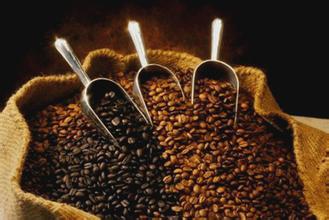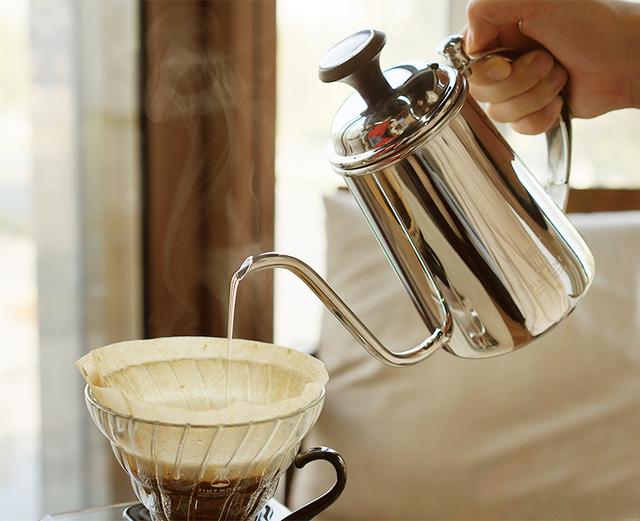Coffee Language Baristas Need to Know
We will explain several adjectives or nouns. I would like to remind you that these words are neutral and have no value judgment.
● texture, Body,Mouthfeel texture refers to the thick and slippery touch of coffee in the mouth, which is proportional to the amount of colloid suspension in the coffee. Since the texture is felt throughout the mouth, we use "rich" to describe thick coffee, while vice versa, we use "thin". Thin coffee tastes like wine or lemonade, while rich coffee tastes like full-fat fresh milk or even syrup.
● Hui Gan, Finish Hui Gan refers to the feeling left by the coffee in the mouth, throat and esophagus after swallowing or spitting it out. Freshness is the main cause of sweetness. After drinking Espresso coffee made from fresh coffee beans, in addition to the aroma of coffee from the mouth to the esophagus and the aftertaste after being stimulated, there will also be a feeling of numbness in the throat, which lasts for about two or three minutes, while the whole intoxicating aftertaste will not disappear until 30 or 40 minutes later. Huigan makes your breath so fragrant that you can't bear to drink water to dilute it; this is very different from the uncomfortable spiciness, irritation and dryness of over-extraction.
● sweet when we say "the soup is sweet", it does not necessarily mean that there is a lot of sugar in the soup; similarly, sweetness has two meanings in the words that describe the taste of coffee. The first is the stimulation of sugar on the tip of the tongue, that is, the so-called sweetness; the other means that between Full-City and espresso baking (before and after the start of oil production), as part of the astringent substance disappears, giving the coffee a low-acid, round, soft and rich taste of glycol, reminiscent of syrup; here the tip of the tongue does not have to react.
● irritation, astringency (bitter) these are the characteristics of deep-baked beans, like sour taste, not necessarily uncomfortable. The irritation is a bit like the taste of soda, the feeling of the whole mouth and throat, not just the tongue. Generally speaking, friends who drink American coffee or Saifeng coffee may use "strong" to describe this feature.
●, Earthiness,Wildness, is usually found in dried coffee, which in a way is a flaw in the taste of coffee: it is a slightly irritating feeling like soda, a slightly unpleasant acid mixed with pleasant acid; the sour taste of mocha is typical. Sometimes a small amount of earthy smell or a slightly irritating smell of ginger can energize the coffee and ── actually makes the senses more awake and sharp.
● clean (Clean) coffee is not rustic, not wild, and has no flaws and dazzling features; washed Colombia is an example.
● smooth (smooth) refers to a sweet espresso that is sour and irritating, occasionally with a little sugar and can be comfortably drunk without milk.
● complexity (Complexity) is characterized by the coexistence of different levels in the same cup of coffee. High complexity means that there are many kinds of sensory stimuli that can be felt. It should be noted that these feelings include the remaining rhyme and are not necessarily limited to the present feeling of drinking.
● balance (Balance) has interesting features that are complex enough, but none of them stand out.
● depth (Depth) is a more subjective adjective, which refers to the resonance and appeal beyond sensory stimulation. It is the psychological emotion caused by some meticulous feelings or the complex interaction between different senses. Other commonly used vocabularies are aroma, richness, flavor and varietal distinction or character. Wait a minute, I think some of them are literal, and some of them are too vague and beyond my ability, so I won't write any more. Mastering the vocabulary of these flavors not only enables us to introduce the characteristics of coffee beans in different countries in more detail, but also enables us to describe our tastes and be more aware of our preferences.

Source: network
Important Notice :
前街咖啡 FrontStreet Coffee has moved to new addredd:
FrontStreet Coffee Address: 315,Donghua East Road,GuangZhou
Tel:020 38364473
- Prev

The introduction and source of small coffee novice must see
Arabica scientific name: Coffea arabica family: Rubiaceae coffee morphological characteristics: small trees or large shrubs, plant height 5~8 meters. Base usually much branched, older branches gray. nodes dilated, young branches glabrous. Leaves thin leathery ovate-lanceolate or lanceolate, apex long acuminate, base cuneate or slightly obtuse, entire or shallowly undulate, glabrous on both sides. Cymes several clustered in leaf axils
- Next

The grinding process of coffee should also match the cooking method.
The quality of the minced coffee has a great influence on the next cooking process. The grinding process should also match the cooking method, which is the key to extracting the best flavor from coffee beans. The cooking method of coffee powder which is in contact with hot water for a long time requires thicker particles. If the coffee powder is too fine relative to the cooking method, the coffee will be too bitter, hard and overcooked.
Related
- What is the meaning of lactic acid fermentation with coffee bean treatment?
- How to judge the state of foam by sound?
- How does the latte pull out the unicorn pattern? Come to get for a little trick to improve the flower pull!
- Will flower pulling affect the taste of the latte?
- Do you know the history of coffee?
- The difference between honey treatment and sun washing what is raisin honey treatment?
- What kind of milk can a novice use to make coffee foam to keep the foam longer? The correct method and skills of milking tutorial sharing
- Why do washed coffee beans taste sour? Flavor characteristics of washed Coffee
- Introduction to the skill of how to practice the size and height of water injection around the circle of hand-brewed coffee
- How do beginners practice coffee flower drawing from scratch?

